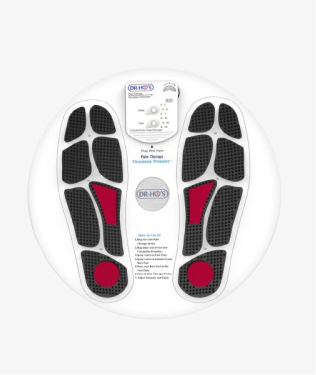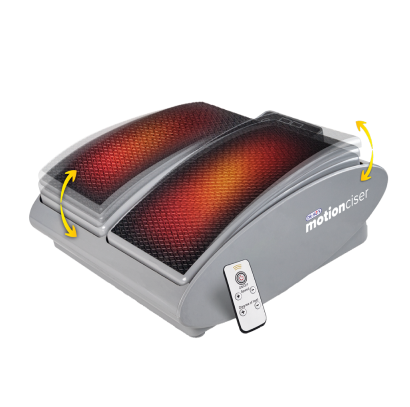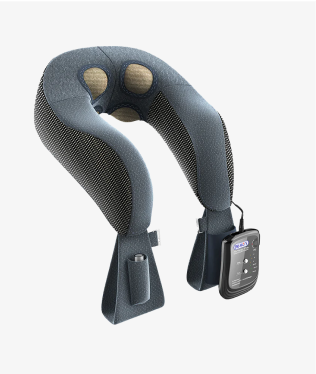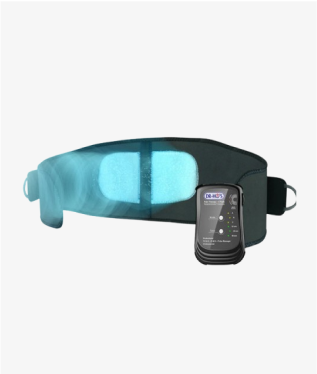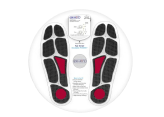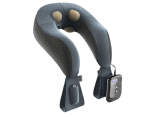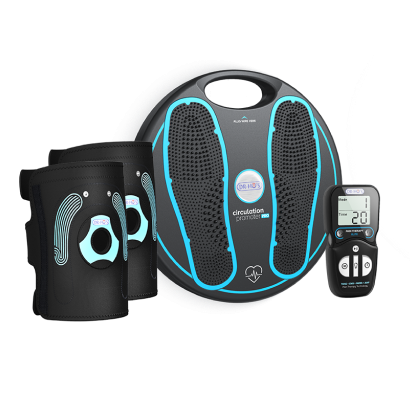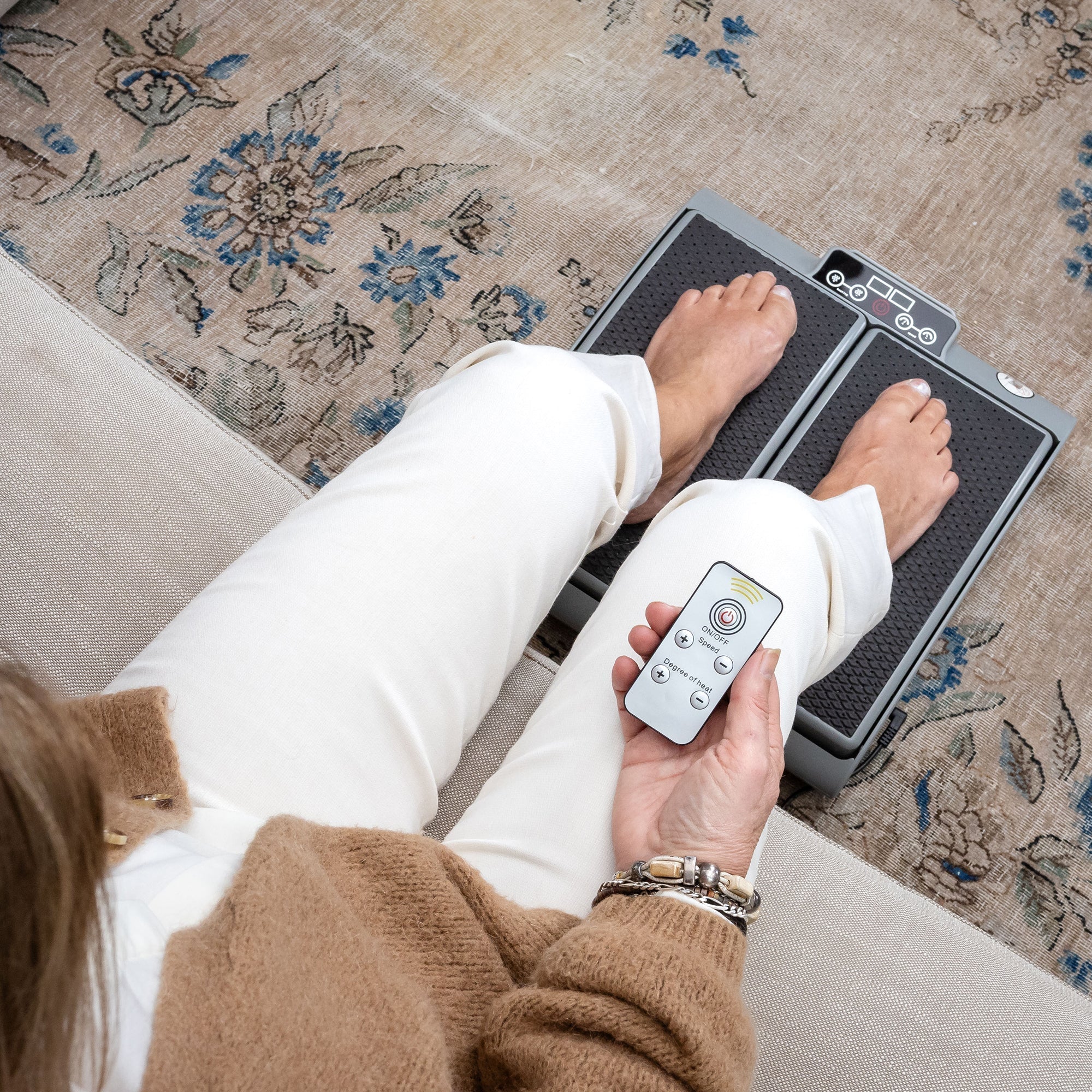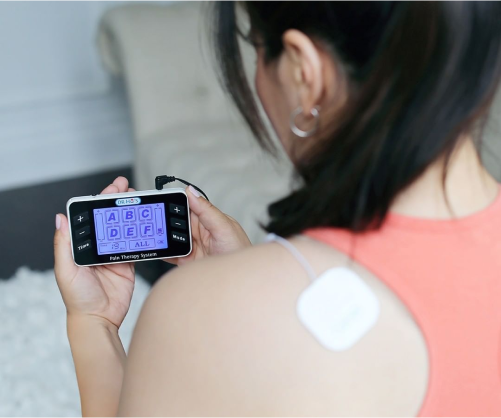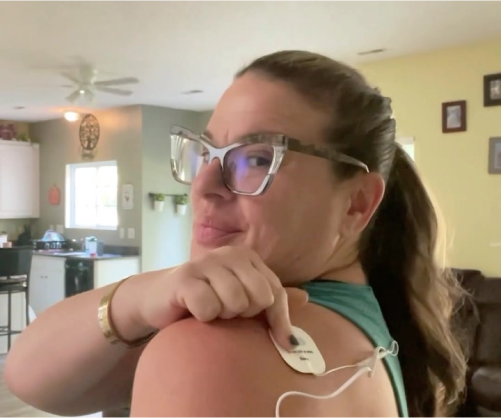Muscle atrophy—the shrinking and weakening of muscle tissue—affects millions of people each year. Whether you're recovering from surgery, dealing with an injury, or experiencing reduced mobility, the loss of muscle mass can significantly impact your quality of life.
Many people ask whether TENS (Transcutaneous Electrical Nerve Stimulation) and EMS (Electrical Muscle Stimulation) devices can help combat muscle atrophy. This blog post explores how these technologies work, what they can realistically accomplish, and how they might fit into your recovery plan.
What is muscle atrophy?
Muscle atrophy refers to the decrease in muscle mass and strength that occurs when muscles aren't used regularly or when certain health conditions affect muscle function. In simple terms, it's the "use it or lose it" principle in action within your body.
Muscle atrophy generally falls into three main categories:
-
Physiologic atrophy: Caused by lack of physical activity or extended periods of immobilization (like wearing a cast after a fracture)
-
Pathologic atrophy: Associated with aging (sarcopenia), malnutrition, and certain chronic diseases like diabetes or heart failure
-
Neurogenic atrophy: The most severe type, resulting from nerve damage or neurological diseases that prevent nerve signals from reaching the muscles

Research shows that muscle loss can occur surprisingly quickly. Studies (Frontiers in Physiology) on young, healthy adults have demonstrated that just two weeks of limb immobilization can result in:
-
9% reduction in quadriceps muscle volume
-
5-8% reduction in muscle cross-sectional area
-
A dramatic 23% reduction in overall strength
Even more concerning is that significant strength loss can begin within the first week of immobilization.
Signs and symptoms
Common indicators of muscle atrophy include:
-
Decreased muscle size
-
Weakness and reduced strength
-
Difficulty performing routine activities
-
Balance problems
-
Visible changes in the appearance of affected body parts
Understanding electrical stimulation technologies for muscle health
Before exploring how functional electrical stimulation affects muscle atrophy, it's important to understand the different technologies available and how DR-HO'S unique approach combines multiple therapeutic methods.
Traditional TENS (Transcutaneous Electrical Nerve Stimulation)
Standard TENS devices focus primarily on pain management. They work by:
-
Sending gentle electrical pulses through the skin to interrupt pain signals
-
Triggering your body's natural pain-fighting mechanisms
-
Providing temporary relief
-
Targeting sensory nerves rather than muscles
While beneficial for discomfort, traditional TENS alone doesn't address the muscle stimulation needed to help with atrophy.
Standard EMS (Electrical Muscle Stimulation)
Basic EMS technology focuses on muscle activation:
-
Delivering electrical impulses that cause muscles to contract and relax
-
Mimicking the natural process that occurs when your brain signals your muscles to move
-
Helping maintain muscle engagement even during periods of reduced activity
-
Targeting motor nerves to produce visible muscle contractions
DR-HO'S proprietary 4-in-1 AMP technology: A next-level approach
DR-HO'S devices go beyond conventional single-function stimulators by integrating multiple therapeutic technologies into one comprehensive system. Our proprietary AMP Technology combines:
1. TENS (Transcutaneous Electrical Nerve Stimulation)
A system that delivers precisely calibrated electrical impulses. These signals effectively interrupt pain transmission to your brain while simultaneously triggering your body's natural endorphin production. Unlike basic TENS units, DR-HO'S technology utilizes a sophisticated range of frequencies and waveforms optimized explicitly for different types of pain.
2. EMS (Electrical Muscle Stimulation)
EMS technology targets this source directly by gently contracting and relaxing the muscles. This rhythmic action helps release chronic tension, reduce spasms, and gradually restore natural muscle function—addressing a key component of the pain cycle.
3. NMES (Neuromuscular Electrical Stimulation)
This technology takes muscle stimulation to the next level by specifically targeting motor nerves. This specialized stimulation helps re-educate weakened muscles. The result is temporary pain relief and enhanced muscle function that can contribute to longer-term comfort.
4. Auto-Modulating Pulse Technology
This system automatically varies the electrical parameters throughout your treatment session, creating a dynamic therapeutic experience. This continual modulation prevents your body from adapting to the stimulation (a common limitation of standard TENS units), ensuring maintained effectiveness throughout each session.

This advanced 4-in-1 approach delivers several benefits not available with basic stimulation devices:
-
Constantly changing signals: The auto-modulating technology automatically varies the pulse width, frequency, and intensity to prevent your body from adapting to the stimulation
-
Deeper therapeutic reach: Specialized waveforms target both surface and deeper tissues
-
Comprehensive treatment: Simultaneously addresses pain relief and muscle maintenance
-
Customizable intensity levels: Adjustable settings accommodate different needs and comfort levels
How DR-HO'S advanced stimulation technology helps combat muscle atrophy
When muscles aren't used regularly, they begin to lose both mass and strength. DR-HO'S 4-in-1 technology offers a multi-faceted approach to addressing muscle atrophy.
Targeted muscle activation
Unlike basic stimulators, DR-HO'S devices deliver precisely calibrated electrical impulses that:
-
Engage specific muscle fibers
-
Produce gentle, rhythmic contractions that mimic natural movement patterns
-
Maintain crucial neuromuscular pathways that can deteriorate during inactivity
-
Help preserve muscle memory and function during recovery periods
Enhanced circulation support
The specialized waveforms in DR-HO'S devices promote local circulation through:
-
Rhythmic muscle contractions that act as a natural pumping mechanism
-
Increased blood flow that delivers oxygen and nutrients to muscle tissue
-
Improved removal of metabolic waste products that can accumulate in inactive muscles
-
Reduced swelling and fluid buildup in affected areas
Comprehensive pain management
The pain relief component of DR-HO'S technology is essential for muscle recovery because:
-
Reducing discomfort allows for earlier and more comfortable rehabilitation
-
Pain relief can increase compliance with therapy and exercise programs
-
Manages pain in a drug-free way
-
Comfortable treatment encourages consistent use for better outcomes
Adaptive stimulation patterns
The Auto-Modulating Pulse (AMP) technology provides continuous variation in:
-
Pulse width to engage different types of nerve fibers
-
Frequency changes may prevent adaptation and habituation
-
Intensity modulation that simulates nerve-firing patterns
-
Waveform combinations that address multiple therapeutic needs simultaneously
This intelligent stimulation approach makes DR-HO'S devices particularly effective for helping maintain muscle health during periods when atrophy risk is highest.
How electrical stimulation affects atrophied muscles
When muscles aren't used regularly, they begin to lose both mass and strength. Electrical stimulation works to counter this process in several important ways.
Research on electrical stimulation for muscle atrophy shows several mechanisms at work:
-
Passive muscle contraction: EMS triggers muscle contractions similar to those produced during voluntary exercise, helping to maintain muscle fiber recruitment patterns.
-
Protein synthesis stimulation: Studies show that electrical stimulation can positively influence the balance between protein breakdown and synthesis, which is crucial in preventing atrophy.
-
Increased circulation: The contractions generated by electrical stimulation increase blood flow to the affected area, delivering more oxygen and nutrients to muscle tissue.
-
Neuromuscular re-education: Regular electrical stimulation helps maintain the nerve-to-muscle pathways that can deteriorate during periods of disuse.
According to a study published in the Journal of Cachexia, Sarcopenia and Muscle, electrical stimulation can increase muscle mass by approximately 1% and improve muscle function by 10-15% after 5-6 weeks of treatment. This suggests that while not a miracle solution, it can be a valuable component of muscle maintenance therapy.
Who should consider using TENS for muscle atrophy
TENS/EMS technology can be particularly beneficial for several groups:
-
Post-surgery patients: After operations, particularly orthopedic procedures, patients often experience forced immobility that leads to muscle atrophy. Electrical stimulation can provide a way to maintain muscle activity during recovery periods.
-
Athletes recovering from injury: Professional and amateur athletes looking to minimize muscle loss during recovery from sports injuries may benefit from TENS/EMS as part of their rehabilitation protocol.
-
People with limited mobility: Those with chronic conditions that restrict movement or individuals who are bedridden can use electrical stimulation to help maintain muscle function.
-
Older adults experiencing sarcopenia: TENS/EMS devices offer a supplementary approach to help maintain muscle function.
-
People recovering from nerve injuries: Research on sciatic nerve crush injury models shows that electrical stimulation can support nerve regeneration and help maintain muscle function during the healing process.
-
People with certain medical conditions: Under proper medical supervision, individuals with conditions like multiple sclerosis, Parkinson's disease, or those recovering from stroke may find TENS/EMS beneficial as part of their care plan.
Disclaimer: This content is for informational purposes, and should not be treated as medical advice. Always consult a healthcare professional for an accurate diagnosis before beginning any treatment program.
Benefits of using a TENS device for muscle atrophy
There are several advantages to incorporating TENS/EMS technology into a muscle atrophy prevention or recovery program:
Passive muscle stimulation
One of the most significant benefits is that electrical stimulation can activate muscles even when voluntary movement isn't possible or is severely limited. This passive stimulation can:
-
Help maintain muscle tone during periods of immobilization
-
Provide muscle activity for those unable to exercise conventionally
-
Complement rehabilitation exercises by targeting specific muscle groups
Increased circulation
The rhythmic contractions produced by EMS technology encourage:
-
Improved blood flow to muscle tissue
-
Enhanced delivery of oxygen and nutrients
-
Better removal of metabolic waste products
-
Reduced swelling in affected areas
Pain management during recovery
DR-HO'S devices with AMP Technology provide dual benefits by combining pain relief with muscle stimulation:
-
Managing pain can make physical therapy and rehabilitation exercises more tolerable
-
Pain reduction may allow for earlier and more effective active rehabilitation
-
Less reliance on pain medications that might have unwanted side effects
Convenience and at-home use
Modern TENS/EMS devices like those offered by DR-HO'S are:
-
Portable and user-friendly
-
Suitable for at-home use between therapy sessions
-
Adjustable to individual comfort levels
-
Available without prescription for most general use cases
Setting realistic expectations: What TENS/EMS can and cannot do
While electrical stimulation offers significant benefits, it's important to understand its limitations and maintain realistic expectations.
What TENS/EMS can do
-
Help maintain muscle strength and tone during periods of immobilization
-
Slow the progression of disuse atrophy
-
Complement physical therapy and exercise programs
-
Provide pain relief that may facilitate more effective rehabilitation
-
Improve local circulation to support tissue health
What TENS/EMS cannot do
-
Completely prevent muscle atrophy or reverse severe muscle atrophy on its own
-
Build significant muscle mass (unlike voluntary resistance training)
-
Replace the need for physical therapy or rehabilitation exercises
-
Treat the underlying causes of neurogenic atrophy
-
Provide the full range of benefits that come from active exercise
According to research, the most effective approach combines electrical stimulation with traditional rehabilitation methods. DR-HO'S devices are designed to work alongside other treatments rather than replace them entirely.
Best practices for using TENS/EMS for muscle atrophy
To maximize the benefits of electrical stimulation for muscle atrophy, follow these guidelines:
Frequency and duration
-
Start with 2-3 sessions per week, gradually increasing as tolerated
-
Begin with 15-20 minute sessions, potentially extending to 30-45 minutes
-
Allow at least 24 hours between sessions for the same muscle group
-
Consistency is key—regular use provides better results than occasional intense sessions
Electrode placement
-
Follow this guide on electrode placement for different body parts
-
For larger muscle groups, use multiple electrodes to cover more area
-
Follow the product guidelines for specific placement recommendations
-
Ensure good skin contact by cleaning the area before application
Intensity levels
DR-HO'S devices feature adjustable intensity levels to accommodate different needs:
-
Start at a low setting and gradually increase until you feel a comfortable muscle contraction
-
The sensation should be noticeable but not painful
-
For muscle stimulation, you should see or feel muscle movement
-
Adjust intensity based on your comfort level and tolerance
Areas to avoid
While your DR-HO'S device is designed to help provide relief, certain areas should always be avoided when placing electrodes:
-
Eyes or surrounding area
-
Forehead and temples
-
Mouth
-
Front of the neck
-
Groin
-
Irritated or broken skin or wounds
-
Any areas with tumors
-
Directly over the spinal column
Special considerations
-
Do not use while pregnant
-
If you have cardiac concerns, consult your healthcare provider before use
-
Do not use with a pacemaker or similar device
-
Always remove jewelry or metal objects from the area where you'll be placing electrodes
-
If pain persists, worsens, or is accompanied by other concerning symptoms (e.g., swelling, redness, fever, or numbness), consult a healthcare provider to identify and address the underlying cause.
Remember that everyone's experience with pain is unique. Always consult your healthcare provider for personalized guidance and pain treatment based on your specific needs.
Conclusion: Successful outcomes come from a multifaceted approach
While not a standalone solution for muscle atrophy, TENS/EMS technology offers valuable benefits as part of a comprehensive approach to maintaining and recovering muscle function.
DR-HO'S devices with innovative AMP Technology provide a unique combination of pain relief and muscle stimulation that works with your body's natural processes to support recovery.
For those dealing with muscle atrophy due to injury, surgery, or limited mobility, electrical stimulation can be an effective complement to traditional rehabilitation methods. By understanding the capabilities and limitations of this technology, you can set realistic expectations and incorporate it appropriately into your recovery plan.
Remember that the most successful outcomes typically come from a multifaceted approach—combining electrical stimulation with proper nutrition, appropriate exercise when possible, and following your healthcare provider's recommendations. Before starting any new treatment approach, always consult with your doctor, especially if you have underlying health conditions.
DR-HO'S is committed to providing innovative solutions that help people manage pain and support their recovery journey. Our advanced stimulation technology is designed to work with your body to help maintain muscle function and provide temporary relief during the challenging process of recovering from muscle atrophy.
Disclaimer: This content is for informational purposes, and should not be treated as medical advice. While our advanced TENS machine can benefit various pain conditions through its sophisticated combination of TENS, EMS, and NMES guided by our proprietary AMP Technology, proper diagnosis ensures optimal pad placement and treatment protocols. Always consult a healthcare professional for an accurate diagnosis before beginning any treatment program.


